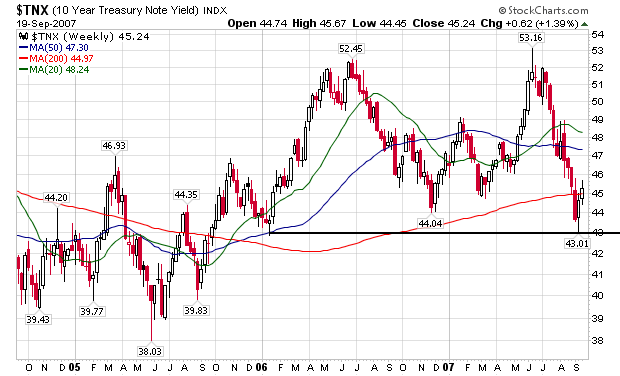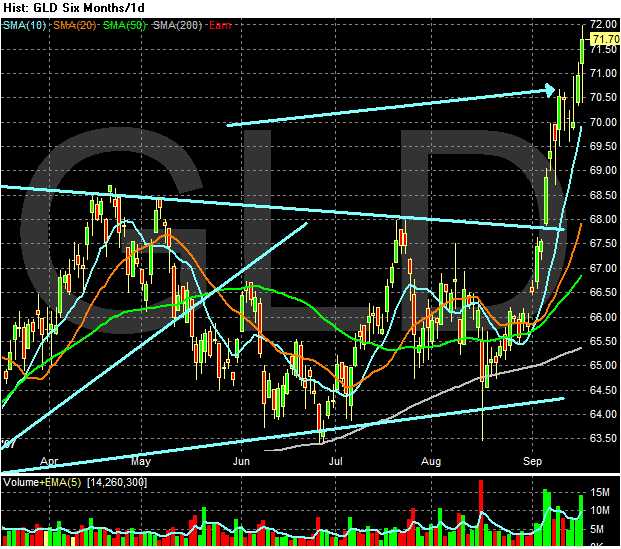Remember that the 10-year Treasury and mortgage rates are closely tied to one another. Mortgage traders use the 10-year Treasury as a hedging tool in their portfolio. So, the value or yield of the 10-year is very important in the mortgage market.

Notice the 10-year yield has been dropping for the better part of the last few months. The reason is simple. The Fed continually said they were more concerned with fighting inflation and bond traders believed them (see this post for a complete rundown of all FOMC statements since January).
Yesterday the Fed basically said, "while inflation is still of a concern, we're now more concerned about economic growth." By lowering rates, the Fed was making the economy more vulnerable to inflation. This eats away at fixed income streams, so traders sell the 10-year Treasury. Because a bond's price and yield are inversely related, yields now move up -- which starts to increase mortgage rates.

As this weekly chart of the 10 year Treasury shows, yields are at a technically important point. Yields have been coming down (so prices are have been moving up). At this point, traders are simply looking for a reason to sell -- the Fed gave them one. The US economy is now more vulnerable to inflation thanks to yesterday's rate cut.
And today's CPI report notwithstanding, there is great cause to be concerned about commodity inflation right now.
First, some of the unreported details from today's CPI report are not good:
During the first eight months of 2007, the CPI-U rose at a 3.7 percent seasonally adjusted annual rate (SAAR). This compares with an increase of 2.5 percent for all of 2006.
Of course, this is only if you're counting such unnecessary items as food and energy.
The larger advance thus far this year was due to larger increases in the energy and food indexes. Despite registering declines in each of the last three months, the index for energy increased at a 12.7 percent SAAR through August. Petroleum-based energy led the acceleration with a 22.7 percent increase at an annual rate. Last year the overall energy index rose 2.9 percent. The food index also increased much more so far this year compared with last year, a 5.6 percent SAAR compared with a 2.1 percent rise for all of 2006. Excluding food and energy, the CPI-U advanced at a 2.3 percent SAAR in the first eight months, following a 2.6 percent rise for all of 2006

The gold ETF confirms the increase of the fear of inflation. Traders big up this sector big time after the rate cut.

Oil is hitting new highs.

And agricultural prices have been increasing for the last two years.
The more I look at yesterday's rate cut, the less happy I am about it.